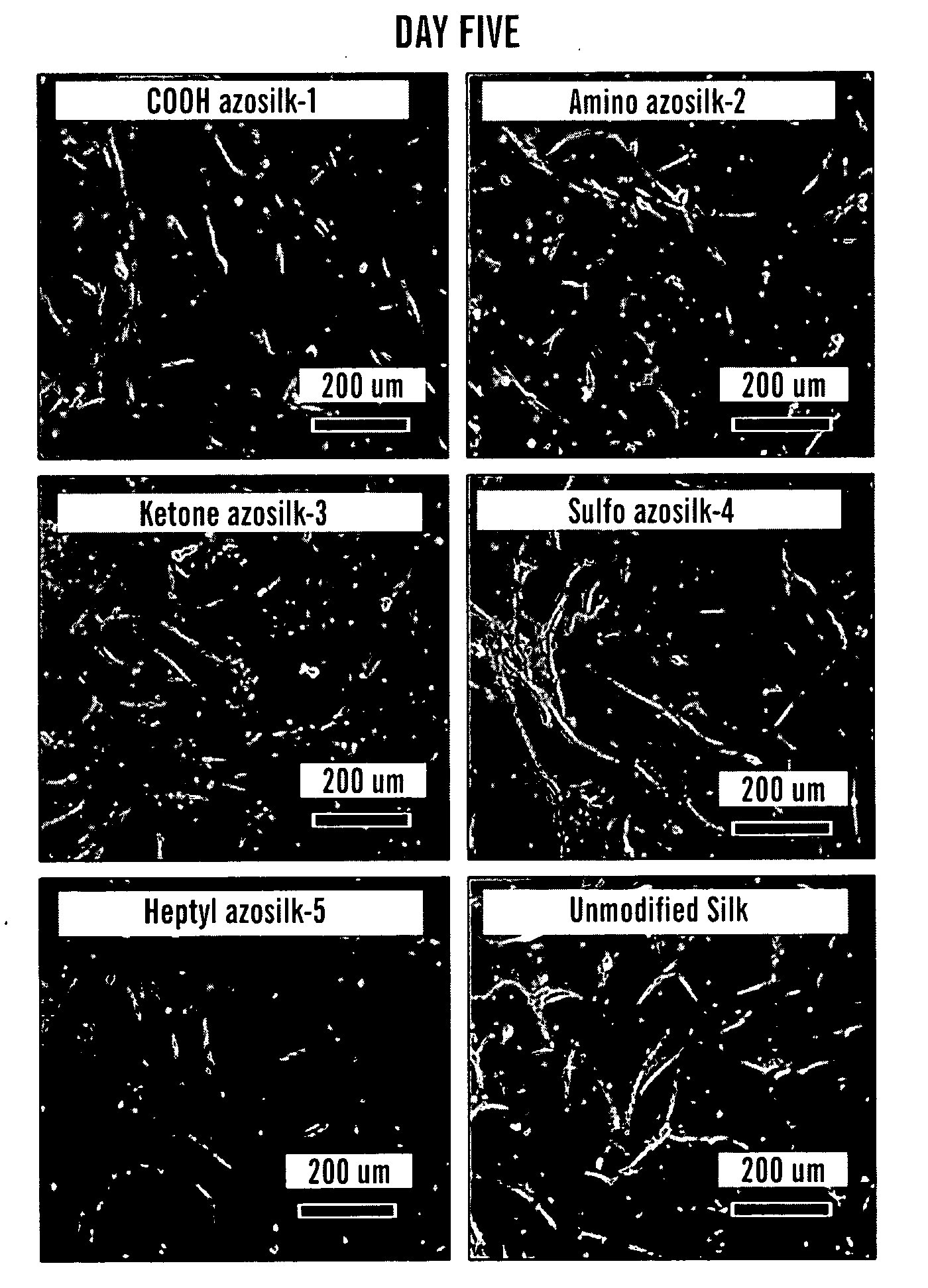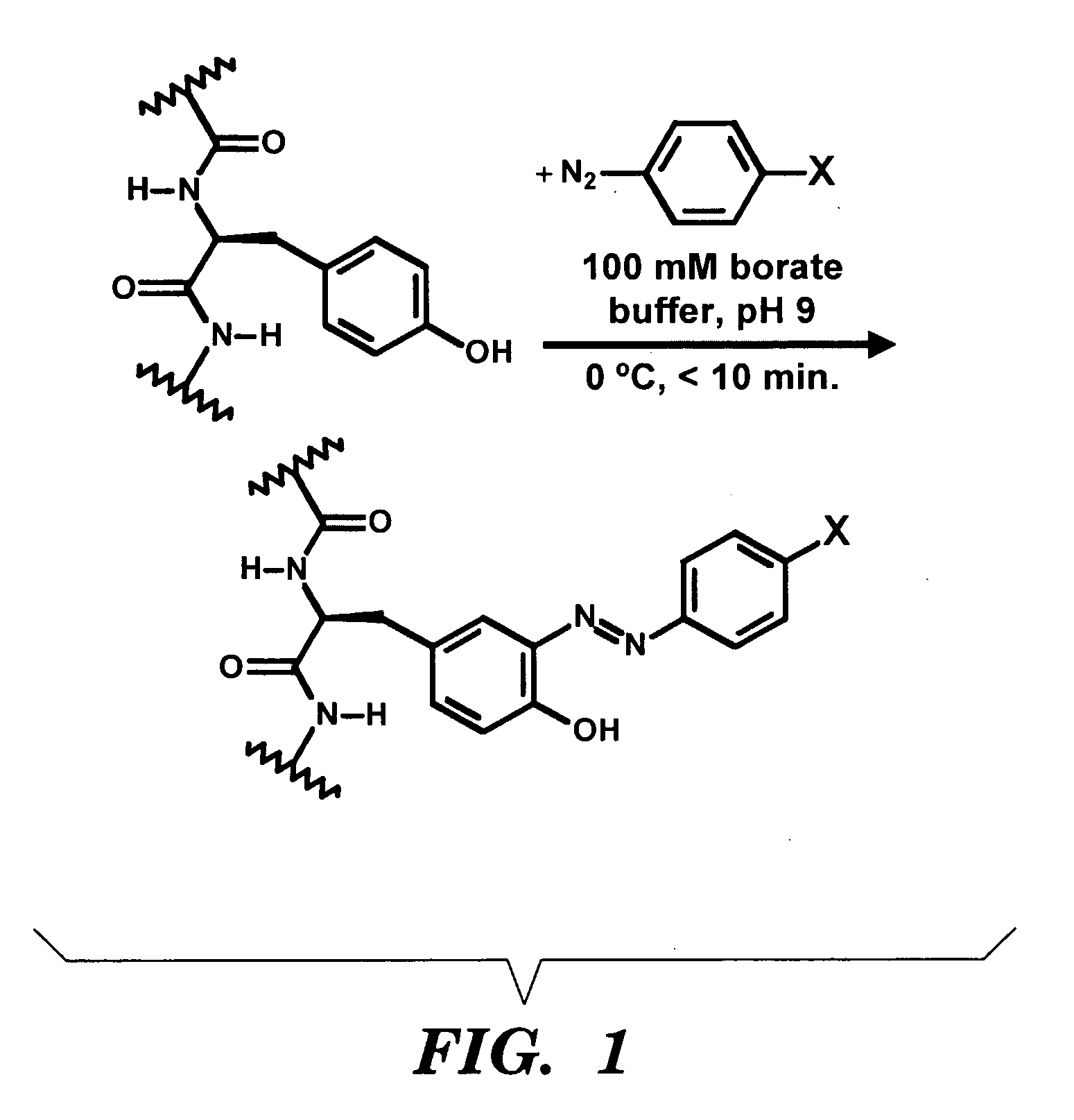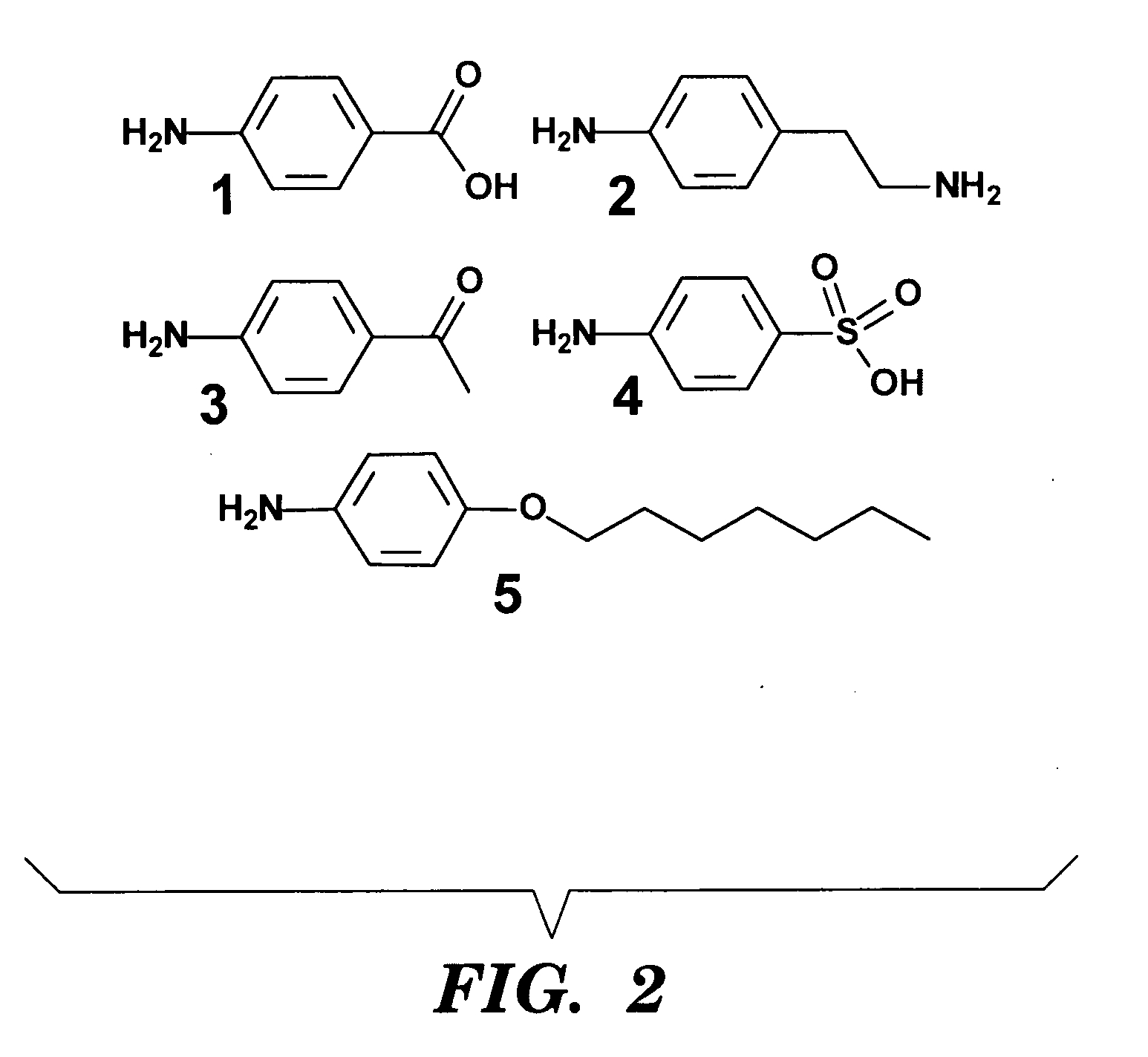Diazonium salt modification of silk polymer
a technology of diazonium salt and silk polymer, which is applied in the direction of packaging foodstuffs, peptide sources, packaged goods types, etc., can solve the problems of inability to reproduce, inconsistent hydrolysis rate and tissue response profiles, and inability to induce inflammation by plga
- Summary
- Abstract
- Description
- Claims
- Application Information
AI Technical Summary
Benefits of technology
Problems solved by technology
Method used
Image
Examples
example 1
An Exemplary Method for Modifying a Silk Polymer with a Diazonium Salt
Materials and Methods
[0100]All chemicals were purchased from Aldrich, Sigma or Fluka and used without further purification. Cell medium ingredients were purchased from Invitrogen and Sigma. Cocoons from B. mori silkworm were obtained from Tajima Shoji Co, (Yokohama, Japan). UV-Vis data were measured with a GBC 916 spectrophotometer in water unless otherwise indicated. Infrared spectra were measured on solid films in ambient atmosphere with an Equinox 55 ATR-FTIR (Bruker, Billerica, Mass.) using an Attenuated Total Reflectance (ATR) accessory. 1H-NMR spectra were recorded with a Bruker Avance 400 NMR Spectrometer using D2O as the solvent.
Preparation of Aqueous Silk Solutions
[0101]Aqueous solutions of the silk protein were obtained using previously published methods from Altman et al, (2003); H-J. Jin J. P., et al (2005); Nazarov R., et al (2004), which are incorporated herein by reference. Cocoons from the B. mori ...
example 2
An Exemplary Method for Culturing Cells on Diazonium Modified Insoluble Silk Polymer
Preparation of Silk Films for Cell Culture
[0112]All five modified silk fibroin solutions were prepared as described above by combining 375 μL of each diazonium salt with 2 mL of silk solution in borate buffer diluted with 125 μL of a 1:1 acetonitrile / water mixture (approximately 0.40 equivalents of diazonium salt relative to the number of tyrosines in silk). The unmodified silk control was prepared by diluting 2 mL of silk solution in borate buffer with 500 μL of a 1:1 acetonitrile / water mixture. The modified and unmodified silk solutions were purified by passing the reaction mixture through disposable Sephadex size exclusion columns, pre-equilibrated with ultrapure water. To ensure that all small molecules and salts were removed, these solutions were passed through a second Sephadex size exclusion column, again eluting with ultrapure water. The resulting solutions had a silk concentration of ˜2 wt %...
example 3
Characterization of Exemplary Modified Silk Polymers
[0116]Carboxylic acid (1), amine (2), ketone (3), sulfonic acid (4), and alkyl (5) functional groups were used to demonstrate the range of functional groups that can be incorporated into silk using this chemistry. Pure silk fibers were dissolved in concentrated lithium bromide, and dialyzed into borate buffer prior to reaction. Silk fibroin contains about 280 tyrosine amino acids per protein (Zhou C Z, et al. Proteins 2001;44(2):119-22), so the molar ratio of diazonium salt to tyrosine was tailored to produce the desired level of modification. Reaction times varied for the different anilines used, but in all cases >90% of the modified protein was recovered after the reaction.
Characterization of Azo Incorporation
[0117]The silk protein was treated with 0.10, 0.25 or 0.40 molar equivalents of the diazonium salt of (4) relative to the number of tyrosine residues. These samples were analyzed with UV / vis and 1H-NMR spectroscopy and compa...
PUM
| Property | Measurement | Unit |
|---|---|---|
| concentration | aaaaa | aaaaa |
| concentration | aaaaa | aaaaa |
| wt % | aaaaa | aaaaa |
Abstract
Description
Claims
Application Information
 Login to View More
Login to View More - R&D
- Intellectual Property
- Life Sciences
- Materials
- Tech Scout
- Unparalleled Data Quality
- Higher Quality Content
- 60% Fewer Hallucinations
Browse by: Latest US Patents, China's latest patents, Technical Efficacy Thesaurus, Application Domain, Technology Topic, Popular Technical Reports.
© 2025 PatSnap. All rights reserved.Legal|Privacy policy|Modern Slavery Act Transparency Statement|Sitemap|About US| Contact US: help@patsnap.com



